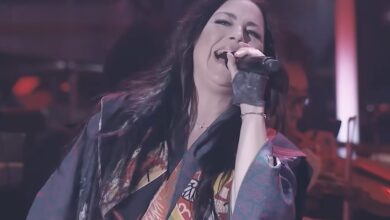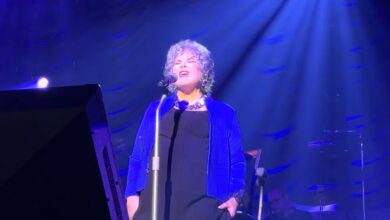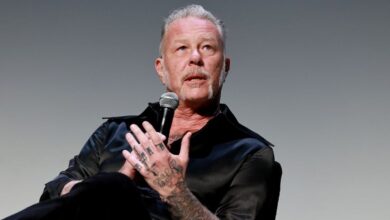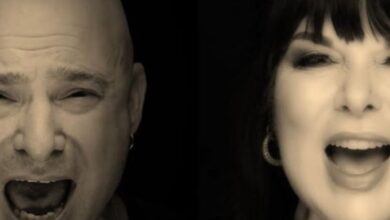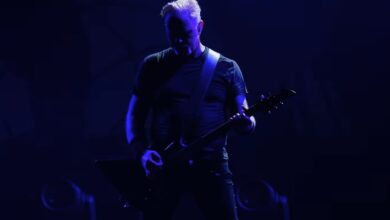Ann Wilson’s “Dream On”: A High-Drama Masterclass
Ann Wilson’s 2021 solo tour brought her to the Hampton Beach Casino Ballroom in Hampton Beach, New Hampshire, on August 18, where she delivered a career-spanning set that blended Heart staples with classic-rock interpretations. The historic room’s close quarters amplified every nuance, making this stop one of the most talked-about dates of her late-summer run. Fans and attendees have repeatedly referenced the night when describing how Wilson balances nostalgia with a modern, finely tuned live sound.
Among the evening’s highlights was a striking rendition of “Dream On,” the Aerosmith anthem that challenges singers to thread delicacy and power without losing control. An audience-shot video from the night confirms the atmosphere in the room: patient, expectant, and fully engaged. The performance offered a time-stamped glimpse of Wilson’s command, documenting how she shaped the song’s architecture in a way that felt faithful yet unmistakably her own.
Wilson approached the piece with careful dynamic pacing, letting the band hold back early so the verses could breathe before she climbed into the upper register with grit and focus. The opening felt conversational rather than grandstanding, which made the lift into the pre-chorus and chorus feel earned. When the hook arrived, her vowels bloomed, and the sustained notes carried warmth instead of strain, a hallmark of seasoned control.
Instrumentation was central to that arc. Guitars sketched the harmony in broad strokes, leaving space for piano and ambient textures to fill the midrange while drums kept a disciplined pocket. As the vocal climbed, the rhythm section opened up: snare accents grew broader, cymbals shimmered longer, and the bass line stepped forward. The result was a slow-burn swell that matched the song’s narrative of endurance and release.
Her touring band at the time, billed as the Amazing Dawgs, featured veteran players whose collective feel gave the set its spine. Reports from the tour identify Tom Bukovac on lead guitar, Tony Lucido on bass, Paul Moak on guitar and keyboards, and Sean Lane on drums. Their ease with dynamics—tight restraint one moment, confident lift the next—allowed Wilson to phrase freely and take risks without the mix ever turning muddy.
Set documentation from that night places “Dream On” amid a thoughtful sequence that balanced Heart essentials with carefully chosen covers. Fans recall “Crazy on You,” “Magic Man,” “Straight On,” “Even It Up,” and “Barracuda,” interlaced with Led Zeppelin’s “Black Dog” and “Going to California,” Queen’s “Love of My Life,” John Lennon’s “Isolation,” and Steve Earle’s “The Revolution Starts…”. This variety framed “Dream On” as a centerpiece rather than a novelty.
What gives the Hampton Beach performance unusual staying power is that professionally shot footage from the date surfaced later in the year, offering multi-camera views of several songs from the same show. Those clips complemented the fan-captured angle on “Dream On,” giving listeners a broader sense of the staging, lighting, and ensemble communication that shaped the night’s dramatic contours.
Coverage and reposts highlighted encore selections like “Going to California” and “Black Dog,” which helped contextualize “Dream On” within a mini-suite of classic-rock tributes. Instead of replicating the originals, Wilson treated them as living texts, leaning into the drama that her tone, breath, and timing could extract. The thread running through these choices was clear: melody respected, emotion reinterpreted, and arrangement tightened for the room.
The venue’s acoustics contributed to the intimacy. Casino Ballroom shows often privilege clarity and proximity, which rewards artists who let arrangements open slowly. In that space, “Dream On” began in a near hush and grew naturally; the band’s swells met the room without overpowering it. By the time the high notes arrived, the sound felt like an exhale rather than a blast, which sharpened the audience’s emotional response.
Structurally, Wilson honored the original’s verse-escalation-catharsis design while carving out micro-phrasing choices that made the performance distinct. She leaned into elongated pickups, delayed certain resolutions, and shaded ends of lines with a hint of blues, giving familiar contours a new emotional grain. Those subtleties matter on replay, revealing why the arrangement feels both faithful and deeply personal.
The Hampton Beach stop sat inside a tight run of Northeastern dates that week, and accounts from adjacent shows indicate “Dream On” reappeared, suggesting it was a motif she was actively refining. That continuity explains the song’s polish: the band could adjust dynamics night by night while Wilson tested how much air or pressure each section needed to land with maximum effect without tipping into excess.
Audience reactions from the time underscore the balance she struck. Listeners praised the precision of the upper-register passages, the band’s measured build, and the way the performance paid homage to Steven Tyler’s signature without mimicking his phrasing. The consensus emphasized tone, stamina, and restraint—qualities that can be harder to carry off than sheer volume, especially in a room where every detail is audible.
Because both fan and professional footage circulated, viewers could effectively reconstruct the show’s energy arc even if they hadn’t attended. The pattern was consistent: quiet openings, incremental growth, decisive peaks, and a clean release. That architecture flatters an arena-scale anthem like “Dream On,” which depends as much on patience as on power. It also showcased the band’s internal communication—glances, cues, and pocket shifts—that translate to screen.
Placement within the setlist mattered as well. Slotted among Heart landmarks and other canonical covers, “Dream On” acted as a hinge between Wilson’s personal history and the wider classic-rock lineage she’s long inhabited. For longtime fans, it cast light back on her own catalog’s balance of vulnerability and force. For newcomers, it offered an elegant entry point into the vocabulary she has used to tell stories for decades.
The mix itself was notably spacious. Instead of stacking guitars in the same frequency lane as the voice, the arrangement left headroom so sustained lines could sit on top without fighting. Keyboards padded the harmony, drums shaped transients rather than dominating them, and the bass supplied glue. That engineering mindset is why the climactic high notes read as keystones rather than shock tactics.
Taken together, the venue, the band, the set architecture, and the available video record turn August 18, 2021, into a clear snapshot of how Ann Wilson reimagines classic material on a modern stage. “Dream On” served not just as a salute to a foundational rock song but as a demonstration of craft and memory—how a great singer can renew something familiar by trusting dynamics, phrasing, and feel over spectacle.
In the months after the performance, additional clips circulated and kept the Hampton Beach show in the conversation, introducing new listeners to a high-quality document of Wilson’s late-summer form. That afterlife suits the song’s message of perseverance. In her hands that night, “Dream On” was less a look back than a reminder of why these melodies endure—and why artists of her caliber return to them when they want to show what their voices and bands can still do.
